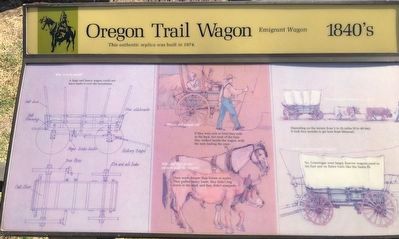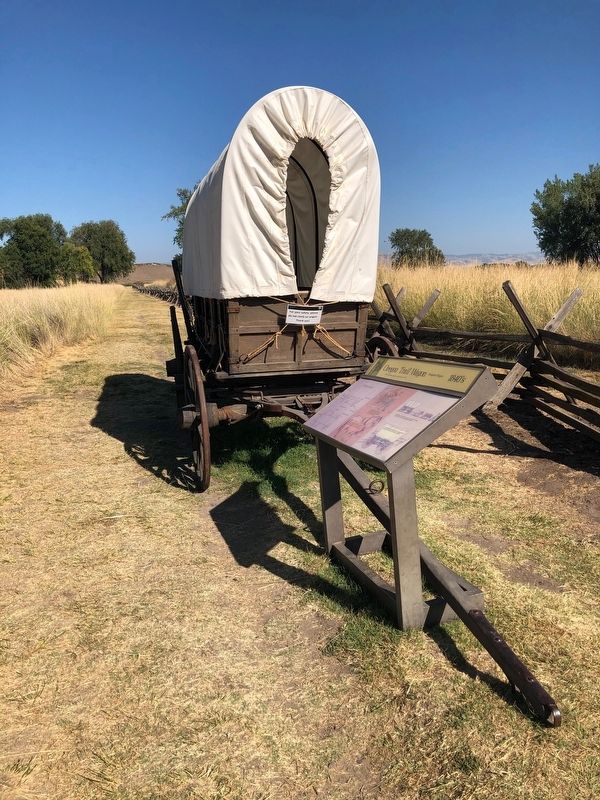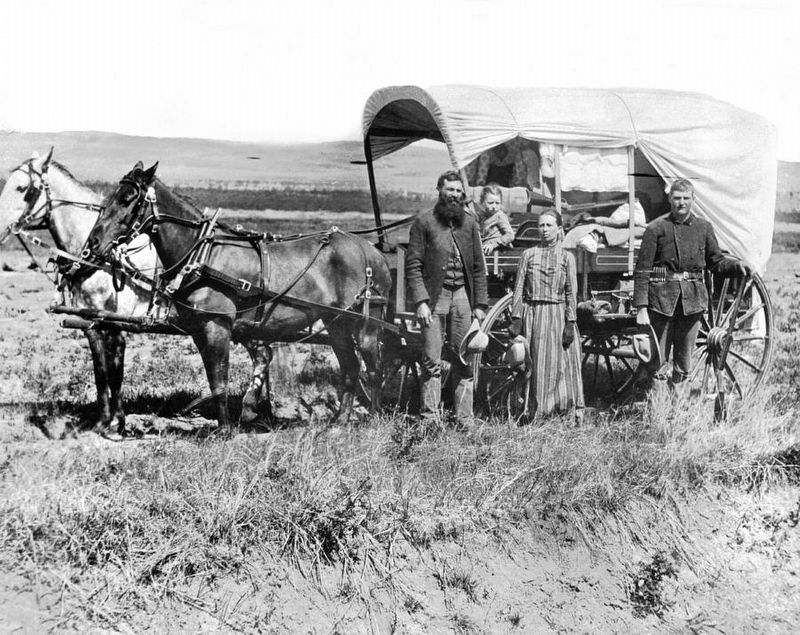Near Walla Walla in Walla Walla County, Washington — The American West (Northwest)
Oregon Trail Wagon
This authentic replica was built in 1974
Why is it so small?
A large and heavy wagon could not have made it over the mountains.
Where did people sit?
If they were sick or tired they rode in the back, but most of the time they walked beside the wagon, with the men leading the oxen.
Why did they prefer oxen to pull the wagon?
Oxen were cheaper than horses or mules. They pulled heavy loads, they didn't bog down in the mud, and they didn't stampede.
How far could they get in a day?
Depending on the terrain from 5 to 25 miles (8 to 40 km). It took four months to get here from Missouri.
Is this a Conestoga Wagon?
No, Conestogas were larger, heavier wagons used in the East and on flatter trails like the Santa Fe.
Erected by National Park Service.
Topics. This historical marker is listed in these topic lists: Roads & Vehicles • Settlements & Settlers.
Location. 46° 2.439′ N, 118° 27.829′ W. Marker is near Walla Walla, Washington, in Walla Walla County. Marker can be reached from Whitman Mission Road near Sweagle Road. The marker is located a Whitman Mission National Historic Site on the Old Oregon Trail. Touch for map. Marker is at or near this postal address: 328 Whitman Mission Road, Walla Walla WA 99362, United States of America. Touch for directions.
Other nearby markers. At least 8 other markers are within walking distance of this marker. Children of the Trail (within shouting distance of this marker); Blacksmiths Shop (within shouting distance of this marker); Emigrant House (within shouting distance of this marker); Mission House (about 300 feet away, measured in a direct line); November 29, 1847 (about 300 feet away); Farming at the Waiilatpu Mission (about 400 feet away); Alice Clarissa Whitman (about 400 feet away); The First House (about 400 feet away). Touch for a list and map of all markers in Walla Walla.
Also see . . . Covered Wagon - Wikipedia. The covered wagon was long the dominant form of transport in pre-industrial America.... Typical farm wagons were merely covered for westward expansion....With its ubiquitous exposure in 20th century media, the covered wagon grew to become an icon of the American West. The fanciful nickname prairie schooner and romantic depiction in wagon trains only served to embellish the legend. (Submitted on November 5, 2020, by Barry Swackhamer of Brentwood, California.)
Credits. This page was last revised on November 5, 2020. It was originally submitted on November 5, 2020, by Barry Swackhamer of Brentwood, California. This page has been viewed 162 times since then and 21 times this year. Photos: 1, 2, 3, 4. submitted on November 5, 2020, by Barry Swackhamer of Brentwood, California.



